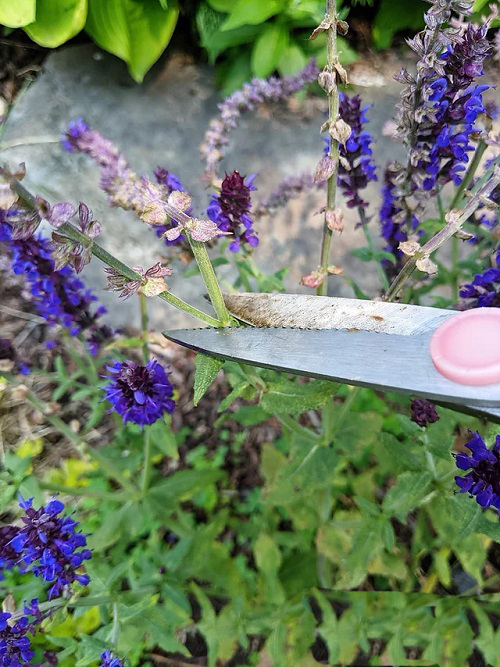Want to know about some secret and Quick Salvia Deadheading Tips for Beginners? Keep on reading for the best ones!
In this article, you will find a detailed Quick Salvia Deadheading Tips for Beginners. The instructions provided here are specifically tailored for newbies ensuring optimal results.
Check out Popular Salvia Plants Varieties here
Quick Salvia Deadheading Tips for Beginners – How Deadheading Helps Salvia Plants ?
Deadheading is the process of removing spent or faded flowers from a plant. It involves cutting off the flowers or seed heads once they have finished blooming or before they have a chance to produce seeds.
- Deadheading promotes the production of new flowers on the salvia plant. By removing the spent blooms, you redirect the plant’s energy from seed production to the development of new flower buds.
- By eliminating wilted or browning flowers, the plant looks neater and more attractive.
- Deadheading prevents the plant from dispersing seeds, reducing the chances of unwanted seedlings taking over your garden.
- Faded flowers are more susceptible to fungal diseases and may serve as a breeding ground for pests. By removing them promptly, you minimize the opportunity for diseases to develop and spread.
Read Salvia Divinorum Growing Information and Facts here
Quick Salvia Deadheading Tips for Beginners

If you’re new to gardening and want to learn the best deadheading tips for salvia plants, here are some simple and helpful guidelines:
- Observe the Plant: Familiarize yourself with the appearance of the flowers. Note their vibrant color when they are in full bloom. As the flowers fade and begin to wilt or lose their color, it’s a good indication that they are ready for deadheading.
- Choose the Right Tools: Invest in a pair of sharp pruning shears or scissors. Having the right tools ensures clean cuts and minimizes damage to the plant.
- Timing is Key: Deadhead your salvia plant regularly throughout the blooming season. Check for faded flowers every few days or once a week, depending on the rate of flower production. Deadheading in a timely manner encourages continuous blooming.
- Identify the Right Spot: Locate the base of the flower stem just above a set of healthy leaves or a lateral bud. Aim to make your cut at an angle, about ¼ inch (0.6 cm) above the leaf or bud.
- Cut with Care: Hold the stem gently but firmly and make a clean cut with your pruning shears or scissors. Avoid crushing or tearing the stem, as this can create openings for potential diseases.
- Clean and Sanitize: Between each cut, wipe the blades of your pruning shears or scissors with rubbing alcohol or a household disinfectant. This helps prevent the spread of diseases or pathogens from one plant to another.
- Monitor the Plant: After deadheading, keep an eye on the plant for any signs of disease or pest infestation. Regularly inspect the foliage and monitor the overall health of the salvia plant.
Remember, deadheading is not the only maintenance practice for salvia plants. Regular watering, proper sunlight exposure, and occasional fertilization are also essential for their overall health and vitality. As you gain experience in gardening, you will become more attuned to the needs of your salvia plants and develop your own techniques for deadheading and caring for them effectively.


